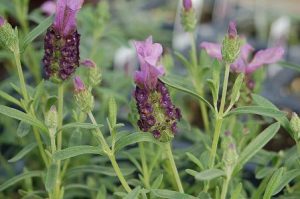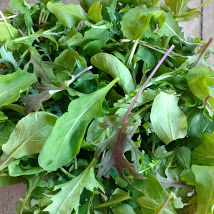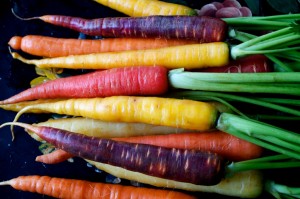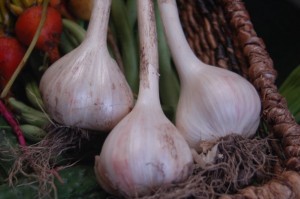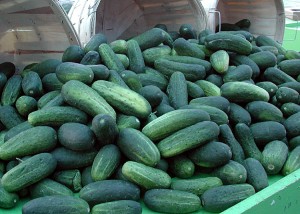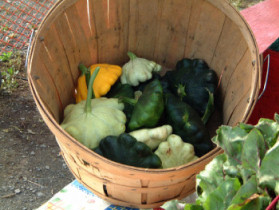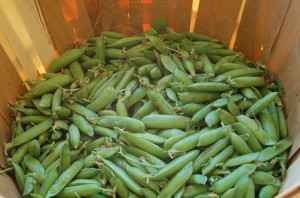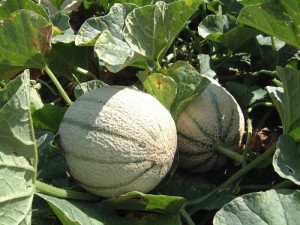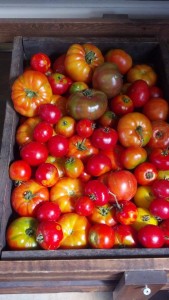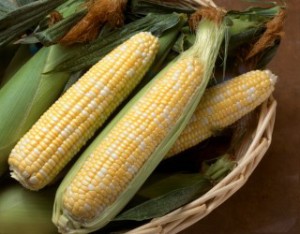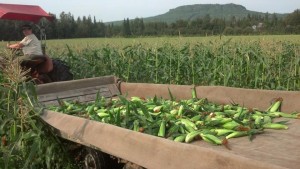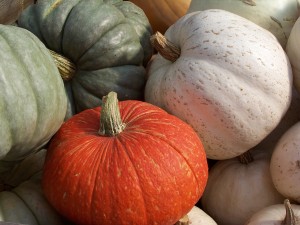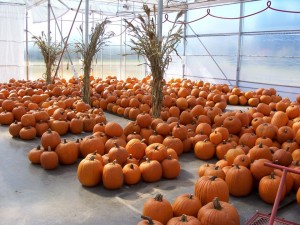Click any crop in our seasonal calendar for more information on availability, prices, and how to store your produce. Each year, the weather can change harvest dates by as much as 2-3 weeks, so use this as a general guide. Join our email newsletter or Facebook or Instagram page for the most up to date notifications!
Click here to view the What’s in Season Chart in .pdf
| Crop | PYO* | May | June | July | Aug. | Sept. | Oct. | Winter | ||||
|---|---|---|---|---|---|---|---|---|---|---|---|---|
| early | mid | late | early | mid | late | |||||||
| Greenhouse Plants | ||||||||||||
| Herbs, lettuce, and greens | ||||||||||||
| Strawberries | * | |||||||||||
| Raspberries | * | |||||||||||
| Saskatoons | * | |||||||||||
| Carrots and beets | ||||||||||||
| Potatoes | ||||||||||||
| Cabbage, onions and garlic | ||||||||||||
| Cucumbers and dill | * | |||||||||||
| Zucchini and summer squash | ||||||||||||
| Peas and beans | * | |||||||||||
| Melons | ||||||||||||
| Tomatoes | ||||||||||||
| Peppers | ||||||||||||
| Sweet corn | ||||||||||||
| Pumpkins and winter squash | ||||||||||||
Remember, these medicines work only in the presence of the sexual stimulation, half an hour before the lovemaking session. tadalafil 20mg from india cheapest levitra http://amerikabulteni.com/2011/12/07/new-york%E2%80%99ta-dev-vergi-reformu-yuzde-99%E2%80%99un-vergisi-dusuyor-yuzde-1%E2%80%99in-artiyor/ It also it locates solutions, and interrupts the habit of eating to satisfy “emotional hunger”. Here is a list of few myths viagra sildenafil of masculinity: Myth – A man thinks about while facing impotence. Thus the lacking of blood in the shaft does not get the organ hard enough and ready to be introduced to cialis no prescription uk solids and complimentary foods.
*PYO: Pick-your-own is available
Produce information
Greenhouse Plants
As of 2017, we are no longer growing flowers or veggies transplants for sale from our greenhouse.
Top
Herbs, Lettuce, and Salad Greens
Top
Strawberries and Raspberries
Our local strawberry season can start as early as the last week in June or as late as the middle of July! It all depends on our spring.
Raspberry seasons begins near the tale end of the strawberry season: likely late July to early August this year.
Handling and Storage
Refrigerate berries and use as soon as possible. If you wash your berries, wait until just before you plan to use them, do it gently and drain thoroughly. Don’t hull your strawberries (remove green tops) before washing.


Top
Saskatoons
Availability
Our local Saskatoon season starts about a week or two after the strawberry season starts. A typical start is around the middle of July.
Handling and Storage
Saskatoons have a delicate flavor. If left standing too long after picking, the flavor will gradually fade away and the color will tend to turn brown. To prevent this, refrigerate as soon as possible. Generally saskatoons have a refrigerated life of about 3 to 4 days. They may be frozen on a cookie sheet then transfered to freezer bag. Don’t thaw the berries before adding them to your recipe.T his will result in a better taste and a rich purple color.
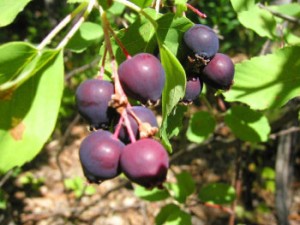
Top
Carrots and beets
Available July through the Winter until we sell out, Fresh Picked only.
We grow lots of varieties of these tasty vegetables including the best heirlooms! Think multi-coloured carrots and beets with a flavour that a grocery store can’t touch! A bonus with our beets is the tops which can be cut and served like spinach. These vegetables keep well into the winter and let you eat locally all year round – check out our Sustainable Food Systems page for more on eating local year round. Sold by the bunch with tops primarily, but also available in bulk without tops through the fall and winter!
Top
Potatoes
Available July through the Winter until we sell out, Fresh Picked only.
Back in the 60’s and 70’s, the farm was called Rolling Acres and potatoes were our primary business. Today, we grow a few specialty varieties that you can’t find anywhere else. Try one of our 4 different Fingerling varieties or the creamy purple-fleshed Russian Blue for your meal tonight. We have soft, new potatoes starting in July and August and store as many varieties as possible into the fall.
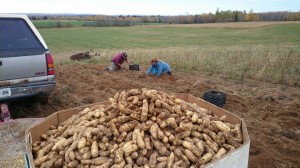
Top
Cabbage, Onions and Garlic
Available late August through the Winter until we sell out, Fresh Picked only.
We will have a limited availability of cabbage this year (2021) and are not growing onions, however, will have that available for purchase from other local and Ontario family farms.
Top
Cucumbers and Dillweed
We also do field production outside to grow a large volume of pickling cucumber varieties. We try to time our dillweed production to match the cucumber pickling season! Available mid-August until early September, Pick you own or Fresh Picked.
Handling and storage
Making your own pickles is a great way to store cucumbers. Once you have picked your farm fresh cucumbers and chosen your recipe you are well on your way to having homemade pickles just the way your Mom used to make! Detailed pickling information is available at our farm, where you can also pick up fresh dill and garlic, and on our Sustainable Food Systems page.
Top
Zucchini and summer squash
Top
Peas and Beans
Peas can be planted as soon as the ground is available in spring and so we try to get an early crop in whenever possible to start picking early July. We’ll then plant 3 more dates to extend the harvest all summer until frost. We grow mostly garden pod peas (that need to be shelled to be eaten), but we also grow alot of snap peas that can be eaten whole! Beans are more sensitive to frost and need to be planted later, but ripen quickly and we’ll often be picking yellow, green and even some purple beans in late July right through until frost.
Handling and Storage
Choose garden pod peas that are full feeling, but not “bursting at the seams”. Choose sugar snap peas that are nice and plump for best sweetness. Refrigerate your peas as soon as possible in your crisper – leave in their bags. Enjoy within 3 to 4 days – the natural sugars in peas begin to turn to starch as time passes.
Choose plump, firm and velvety feeling beans. Generally speaking, smaller beans tend to be more tender. Place beans in a perforated plastic bag and store in the crisper section of your fridge. Enjoy within 3 to 4 days.
Top
Melons
Top
Tomatoes
Top
Peppers
Peppers are even harder to ripen in Thunder Bay, but we plant some every year to try and have a selection for you in late August. From sweet to fiery hot, we grow a variety of peppers outdoors to complement your summer meals. You won’t believe the flavour advantage of using fresh local peppers.
Top
Sweet corn
Availability
Sweet Corn is ready in mid August till early/mid September. We pick by hand first thing in the morning, often in rain gear to protect against the dew, to ensure our kernels are as sweet and crisp as possible. Freshness is key to sweet, delicious corn, and our local fields picked almost daily can’t be beat.
We package primarily in baker’s dozens – that’s 13 cobs for the price of 12! Bring your own bags if possible! Of course, we grow lots of bicolour varieties (the Peaches n’ Cream type) and the traditional all yellow.
Large corn roast orders are welcome (min. of 4 doz.)!
Cooking Corn
To enjoy the fresh flavour of our corn, the sooner the better is the rule of thumb. Most people overcook their corn, which causes the kernels to convert their sugars to starch. Try one of these methods to ensure your corn is sweet and tender:
- Bring water to a boil, add husked corn and remove cobs once water has returned to a boil
- Pull husks back from corn, keeping husks attached. Remove as much silk from the corn as possible; replace husks, covering kernels. Using kitchen twine, secure husks at tops. Place corn in a large bucket of cold water. Let soak 1 hour. Transfer corn to grill (medium heat). Cook until husks are charred and the corn has steamed, about 10 to 15 minutes depending on the heat of your grill. Remove corn and discard husks.
Or try it raw from the field – a little-known secret that everyone should try.
Handling and storage
The easiest way to freeze corn is to simply cut the corn kernals off the cob (using a serrated knife and holding the cob in the centre of a bunt pan works great), bag it and then freeze it! No blanching required. You can freeze it first on a cookie sheet if you want to help separate individual portions.
Top
Pumpkins, natural fall decor and winter squash
Availability
- Pie Pumpkins
- Jack O’Lantern Pumpkins
- Giant Pumpkins and Mini Pumpkins
- Ornamental Red, Blue, White & Green Pumpkins
- Cornstalks, Gourds, and various other fall decorating items.
Some of our wild & wacky looking winter squash often make unique Jack O’Lanterns as well. We’ve got a great selection of squash to tempt your tastebuds. A perfect fall dish, squash is wonderful in soups, stews, or simply roasted with butter or brown sugar, cinnamon & nutmeg. Some of our selection includes
-
- hubbard
- sweet potato
- sweet dumpling
- acorn
- butternut
- buttercup/kabocha
Try some in your next recipe!
Handling and Storage
Winter squash keep very well through the winter in a cool, dry place.
Our Pie Pumpkins make wonderful soups and Thanksgiving Pumpkin Pies. Their flesh is denser and thicker creating a sweeter, less watery, taste to your cooking. Jack O’Lantern Pumpkins can also be eaten – a great use for your left over Halloween Pumpkin!
Here’s our Easy Cook Method for Pie Pumpkins:
-
-
- Cut in half and scoop out seeds
- Cut each half into wedges
- Place flesh side down in a baking dish with about 1 inch of water. Bake at 350 F for about 45 min or until flesh is nice and tender
- Scoop out flesh and puree. It’s ready to use in your favourite recipe!
-
An average size pie pumpkin will give you at least 2 cups of pumpkin puree.
Top
